Abstract
In this study, we evaluated follow-up appointment keeping at a family practice center. To determine if noncompliance could be reduced, four treatments were implemented: no-treatment control, modified appointment card, free follow-up, and a reduced rate follow-up. Thereafter, the reduced rate follow-up was implemented again to determine the extent noncompliance could be reduced for all eligible patients. Incentives significantly increased follow-up appointment keeping, whereas the modified appointment card was ineffective. A cost analysis suggested that the no-treatment control and modified appointment card conditions were the least expensive, but also the least effective. The incentive conditions were more expensive, but the reduced rate condition generated the most net revenue. Questionnaire data suggested that the incentive conditions had an effect on noncompliance and may be considered for use in other medical settings.
Full text
PDF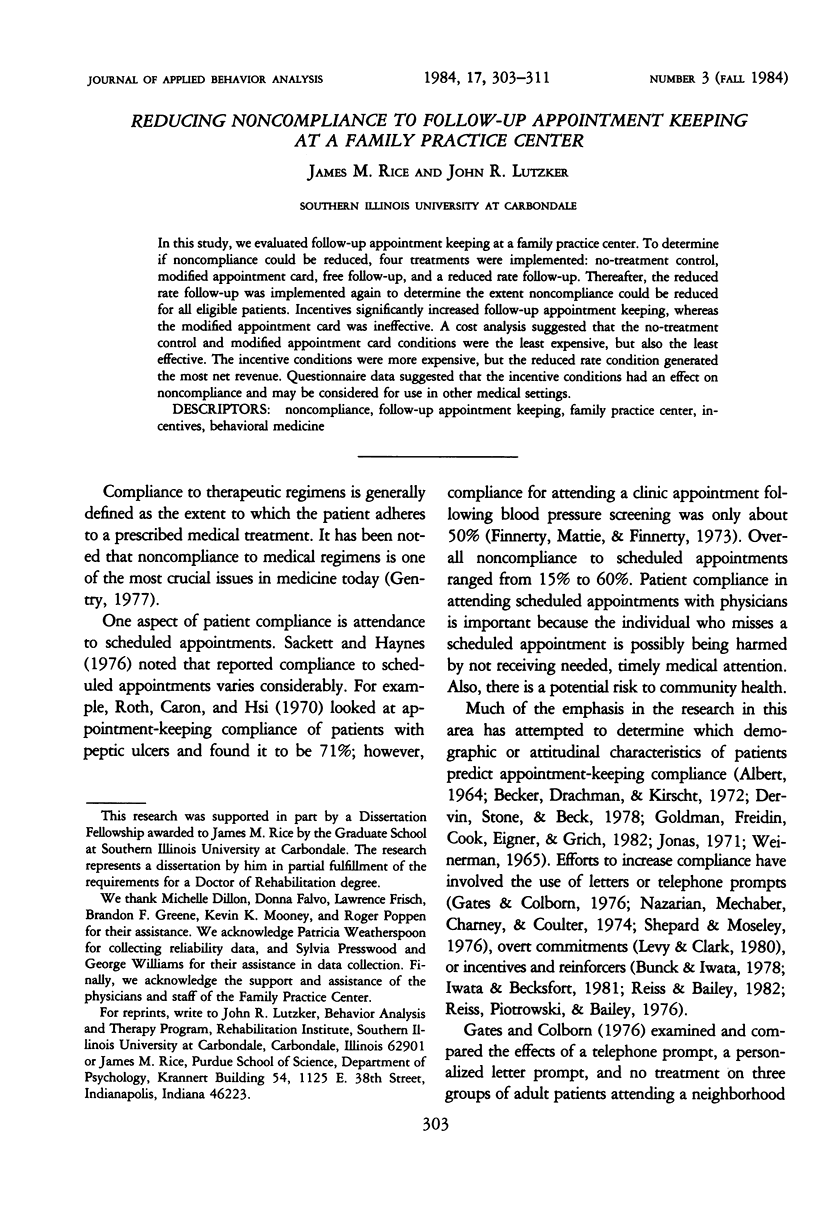
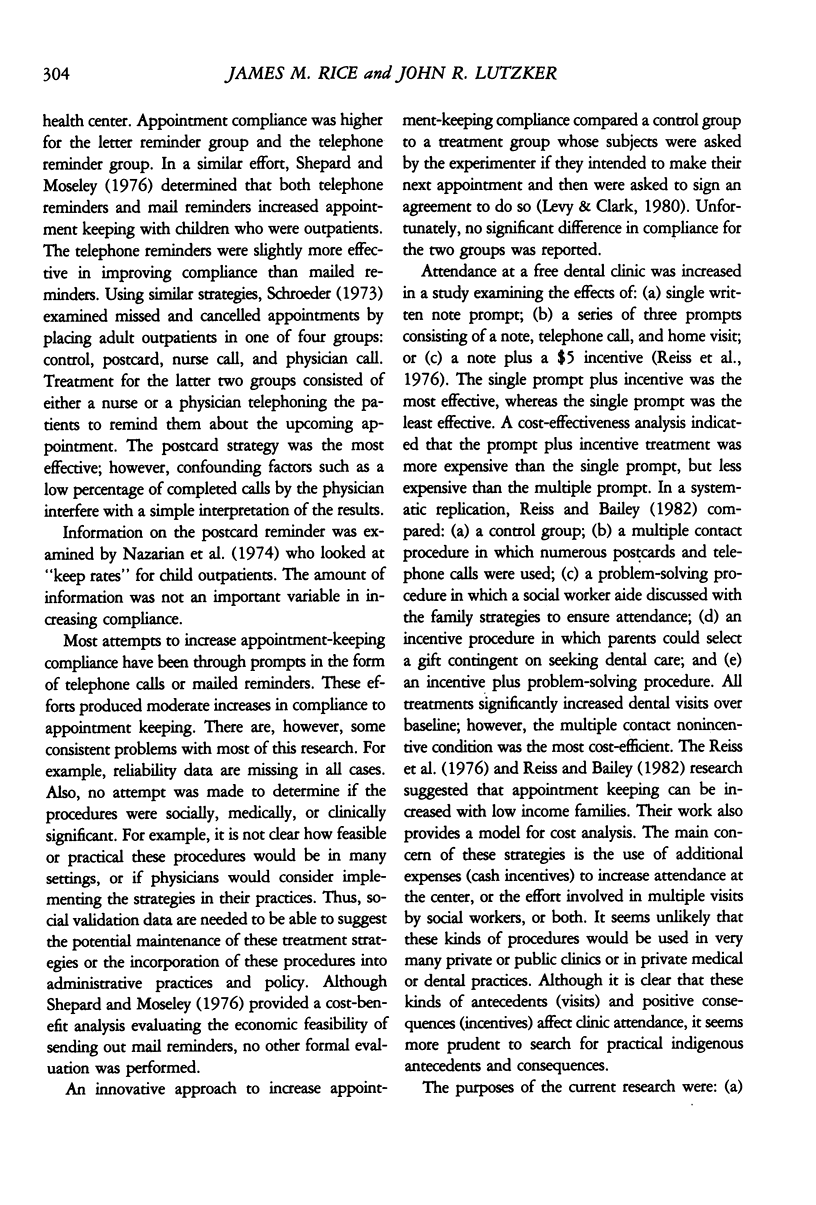
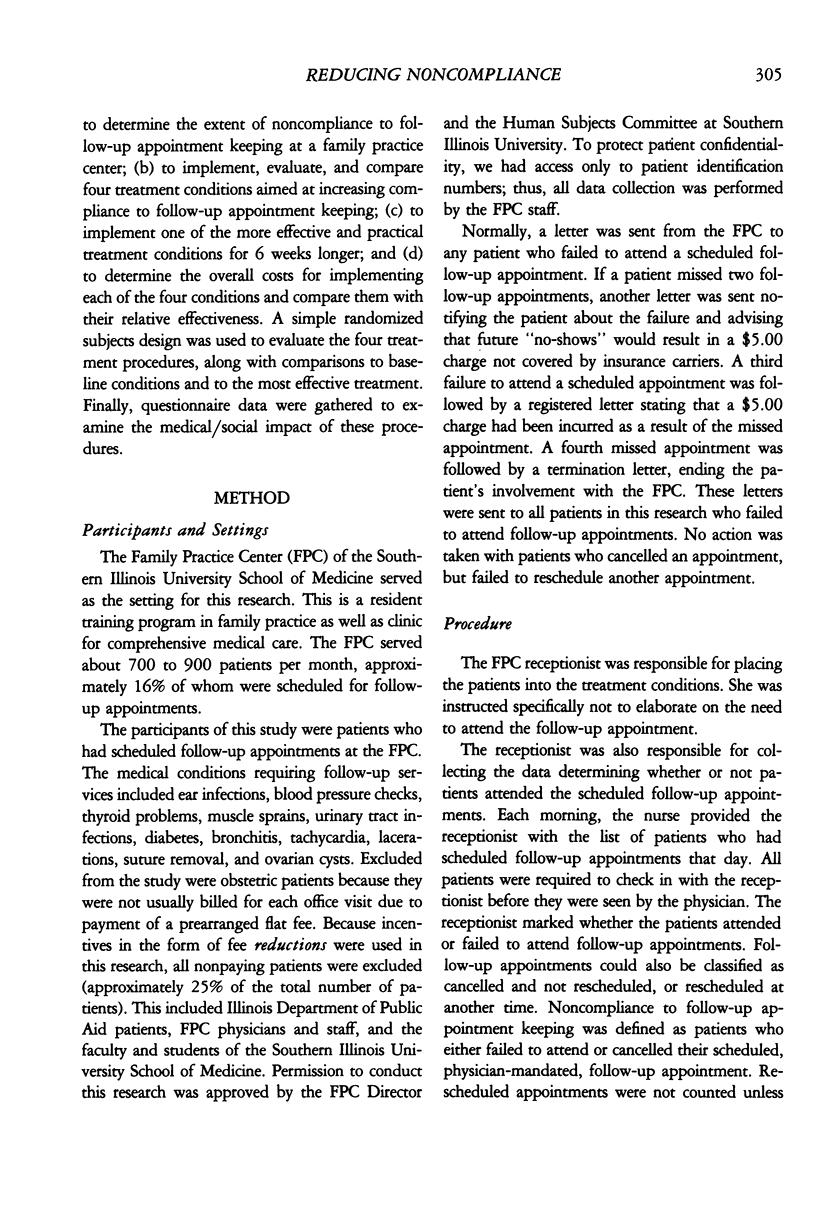
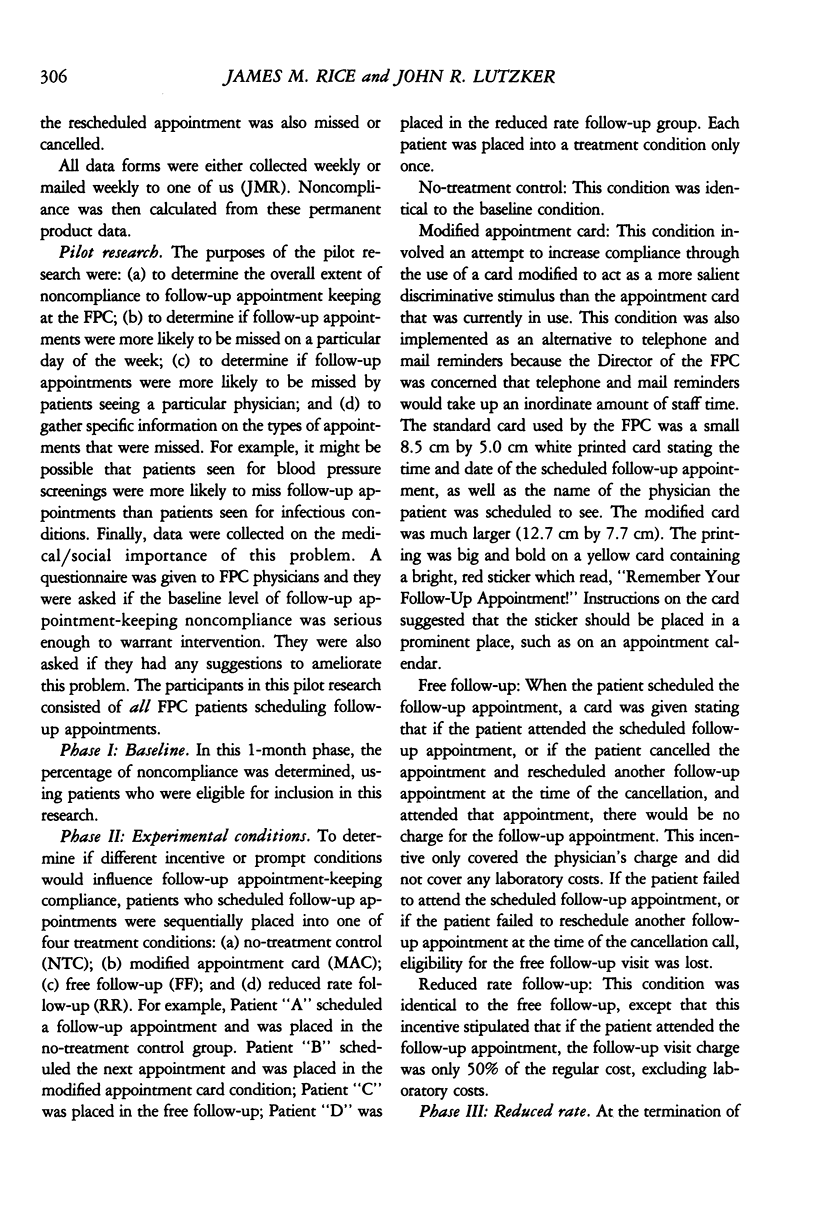
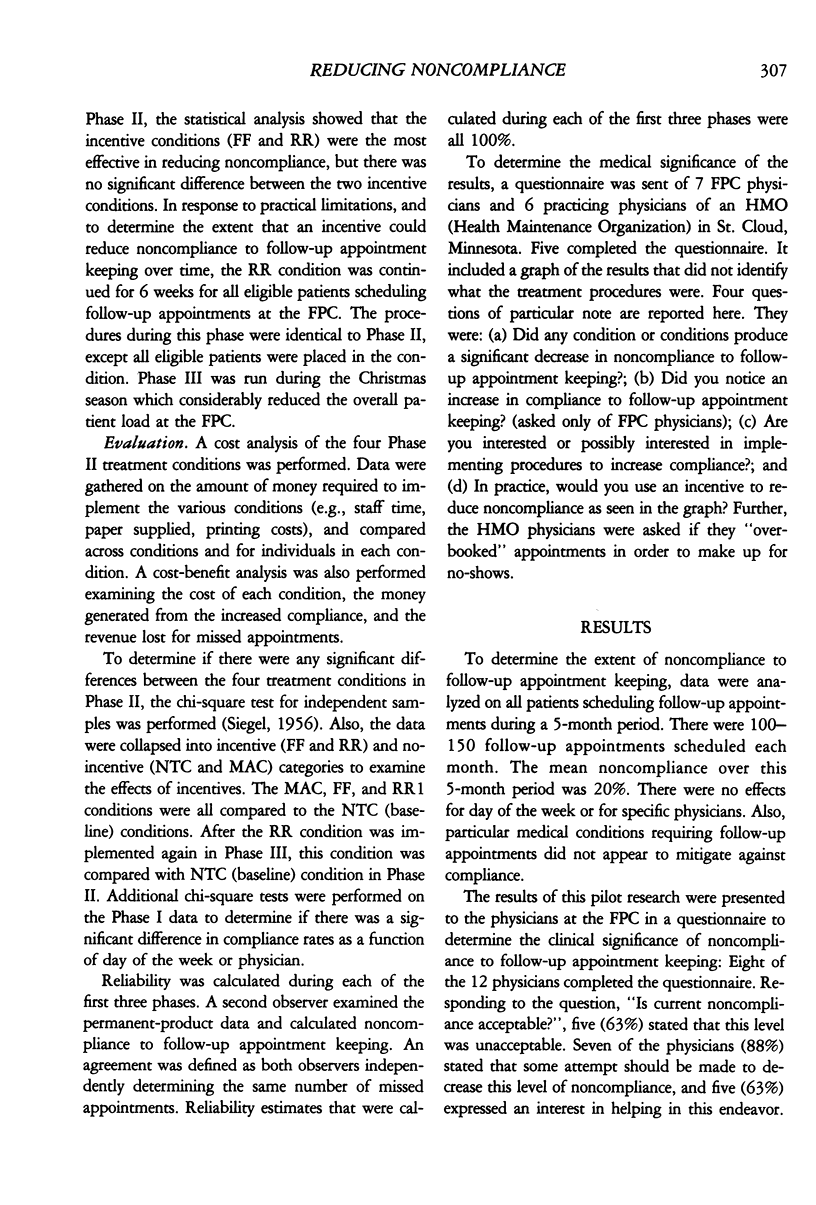

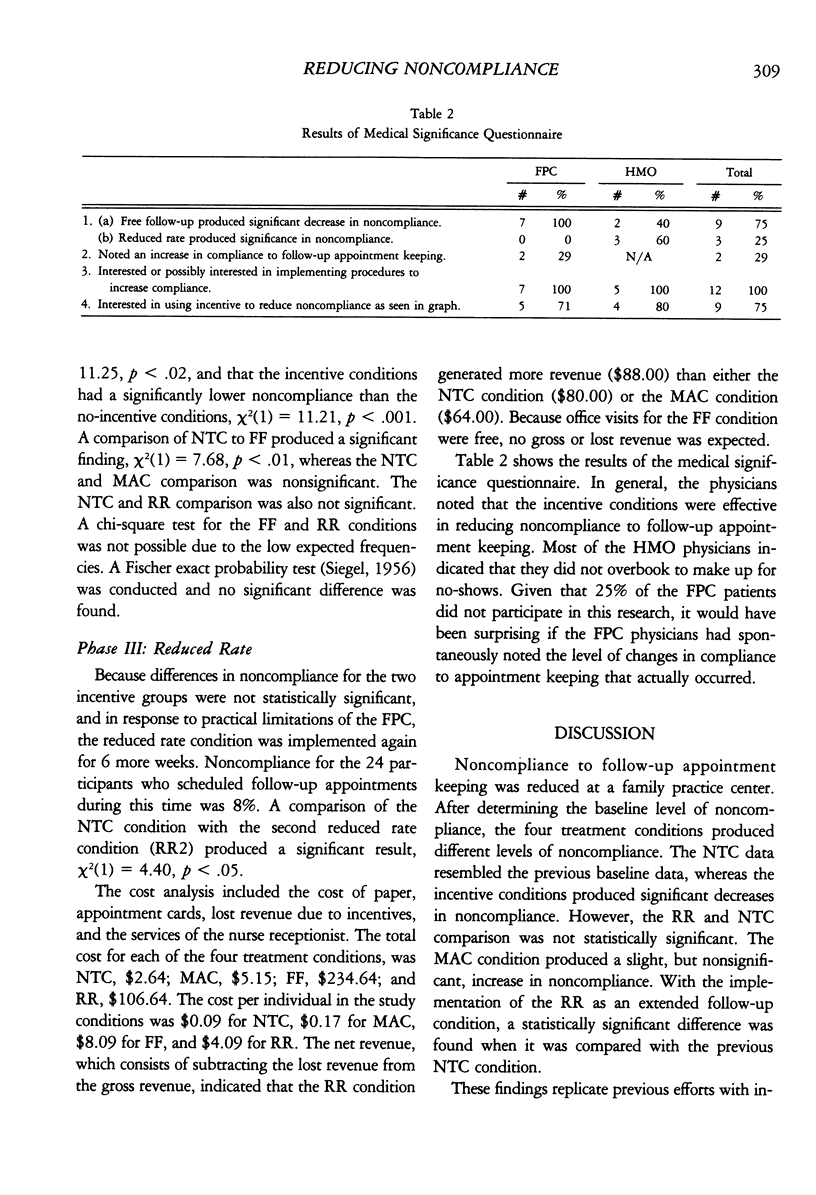

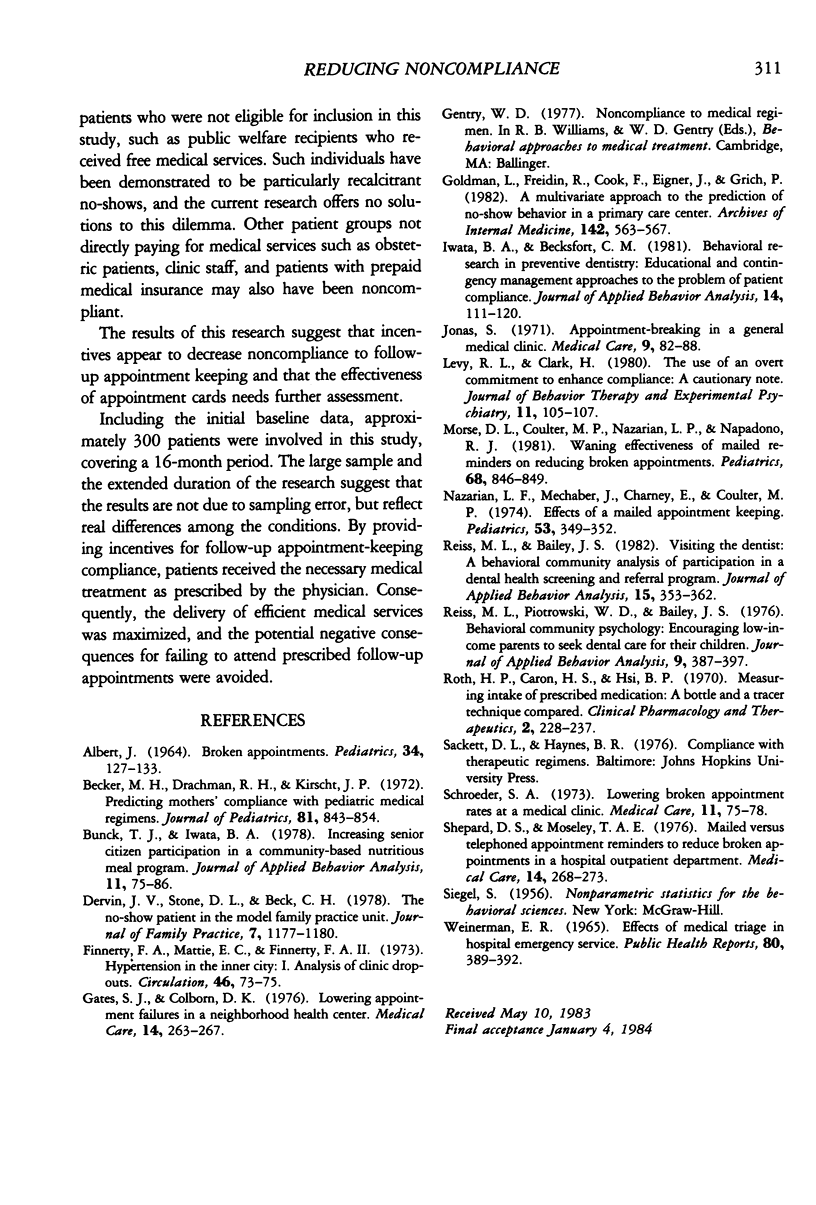
Selected References
These references are in PubMed. This may not be the complete list of references from this article.
- ALPERT J. J. BROKEN APPOINTMENTS. Pediatrics. 1964 Jul;34:127–132. [PubMed] [Google Scholar]
- Becker M. H., Drachman R. H., Kirscht J. P. Predicting mothers' compliance with pediatric medical regimens. J Pediatr. 1972 Oct;81(4):843–854. doi: 10.1016/s0022-3476(72)80118-5. [DOI] [PubMed] [Google Scholar]
- Bunck T. J., Iwata B. A. Increasing senior citizen participation in a community-based nutritious meal program. J Appl Behav Anal. 1978 Spring;11(1):75–86. doi: 10.1901/jaba.1978.11-75. [DOI] [PMC free article] [PubMed] [Google Scholar]
- Dervin J. V., Stone D. L., Beck C. H. The no-show patient in the model family practice unit. J Fam Pract. 1978 Dec;7(6):1177–1180. [PubMed] [Google Scholar]
- Finnerty F. A., Jr, Mattie E. C., Finnerty F. A., 3rd Hypertension in the inner city. I. Analysis of clinic dropouts. Circulation. 1973 Jan;47(1):73–75. doi: 10.1161/01.cir.47.1.73. [DOI] [PubMed] [Google Scholar]
- Gates S. J., Colborn D. K. Lowering appointment failures in a neighborhood health center. Med Care. 1976 Mar;14(3):263–267. doi: 10.1097/00005650-197603000-00007. [DOI] [PubMed] [Google Scholar]
- Goldman L., Freidin R., Cook E. F., Eigner J., Grich P. A multivariate approach to the prediction of no-show behavior in a primary care center. Arch Intern Med. 1982 Mar;142(3):563–567. [PubMed] [Google Scholar]
- Iwata B. A., Becksfort C. M. Behavioral research in preventive dentistry: educational and contingency management approaches to the problem of patient compliance. J Appl Behav Anal. 1981 Summer;14(2):111–120. doi: 10.1901/jaba.1981.14-111. [DOI] [PMC free article] [PubMed] [Google Scholar]
- Jonas S. Appointment-breaking in a general medical clinic. Med Care. 1971 Jan-Feb;9(1):82–88. doi: 10.1097/00005650-197101000-00009. [DOI] [PubMed] [Google Scholar]
- Morse D. L., Coulter M. P., Nazarian L. F., Napodano R. J. Waning effectiveness of mailed reminders on reducing broken appointments. Pediatrics. 1981 Dec;68(6):846–849. [PubMed] [Google Scholar]
- Nazarian L. F., Mechaber J., Charney E., Coulter M. P. Effect of a mailed appointment reminder on appointment keeping. Pediatrics. 1974 Mar;53(3):349–352. [PubMed] [Google Scholar]
- Reiss M. L., Bailey J. S. Visiting the dentist: a behavioral community analysis of participation in a dental health screening and referral program. J Appl Behav Anal. 1982 Fall;15(3):353–362. doi: 10.1901/jaba.1982.15-353. [DOI] [PMC free article] [PubMed] [Google Scholar]
- Reiss M. L., Piotrowski W. D., Bailey J. S. Behavioral community psychology: encouraging low-income parents to seek dental care for their children. J Appl Behav Anal. 1976 WINTER;9(4):387–397. doi: 10.1901/jaba.1976.9-387. [DOI] [PMC free article] [PubMed] [Google Scholar]
- Roth H. P., Caron H. S., Hsi B. P. Measuring intake of a prescribed medication. A bottle count and a tracer technique compared. Clin Pharmacol Ther. 1970 Mar-Apr;11(2):228–237. doi: 10.1002/cpt1970112228. [DOI] [PubMed] [Google Scholar]
- Schroeder S. A. Lowering broken appointment rates at a medical clinic. Med Care. 1973 Jan-Feb;11(1):75–78. [PubMed] [Google Scholar]
- Shepard D. S., Moseley T. A., 3rd Mailed versus telephoned appointment reminders to reduce broken appointments in a hospital outpatient department. Med Care. 1976 Mar;14(3):268–273. doi: 10.1097/00005650-197603000-00008. [DOI] [PubMed] [Google Scholar]
- WEINERMAN E. R., RUTZEN S. R., PEARSON D. A. EFFECTS OF MEDICAL "TRIAGE" IN HOSPITAL EMERGENCY SERVICE. Public Health Rep. 1965 May;80:389–399. [PMC free article] [PubMed] [Google Scholar]


